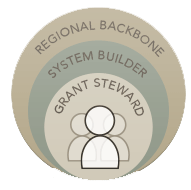Labor markets, employment, jobs, workforce development—these topics are at the forefront of many communities throughout the seven states of the Tenth District. However, how they play out in each state and community differs greatly. This article from Steven Shepelwich, Senior Community Development Advisor takes a look at trends and resources available.
The Kansas City Fed recently hosted forums in Albuquerque, N.M.; Denver, Colo.; Kansas City, Mo.; Oklahoma City, Okla.; and Omaha, Neb., to share new research on labor force conditions faced by low- and moderate-income (LMI) workers and gain insight into local workforce issues. More than 260 leaders from the community and workforce development, business and education sectors participated in the forums.
Melissa Robbins from the South Central WIB and Jasen Jones from the Southwest WIB participated in the Kansas City event in July. This article from Steven Shepelwich, Senior Community Development Advisor takes a look at trends and resources available.
The Kansas City Fed’s Workforce Development program provides community leaders and professionals with research and resources about local labor markets, effective policies and innovative programs. Integrating these efforts into employee training helps promote mutual growth between employers, the labor market and the community.
During the forums, findings from the Bank’s new research report, the Tenth District LMI Labor Force Report, provided a foundation for the discussions. This report presents analyses of trends in unemployment rates, employment projections for workers with training and experience typical of LMI individuals, and wage and job availability data.
An important contribution of the report is an analysis of unemployment rates by income group using county unemployment rates. This new method provides insight into the complex relationship of income and unemployment. Unemployment rates in LMI counties were found to be much higher than unemployment rates in middle- and upper-income counties.
A key contributor to this difference in unemployment rates is that LMI workers tend to have lower education levels and more sporadic work experience. The report reviewed national job projections and found that wages and salaries in all occupations requiring little education or experience would place a worker in the LMI category. Low-skill, direct-care jobs in the healthcare sector are increasing rapidly and provide employment opportunities for many with limited skills or experience.
Given the rapid increase in direct-care positions in the healthcare sector and their low barriers to entry, the Bank has developed partnerships focused on improving the outcomes of these positions for LMI workers. Through one partnership, the Bank is working with the New Mexico Direct Caregiver Coalition to define career paths that will expand opportunities for those who provide direct care. This approach strengthens connections among employers, education providers and support organizations to provide workers with greater access to resources and support.
In Oklahoma, the Bank is collaborating with the Greater Oklahoma City Hispanic Chamber of Commerce, Oklahoma State University – Oklahoma City campus, and the Central Oklahoma Workforce Investment Board, to connect bilingual workers to high-demand jobs in the healthcare and public safety fields. This program focuses on outreach, assessment and establishing educational pathways to serve workers with limited education and work experience.
These engagements are based on the Bank’s understanding of workforce issues, its research and partnerships with local stakeholders. The Bank frames its work around activities of convening stakeholders, leading engagements with partners and developing resources for practitioners. See sidebar for a list of activities.
In each forum, participants discussed critical workforce development issues faced in their communities. The following were recurring themes:
- Coordination of resources: Participants identified the need for holistic, community-based approaches to develop jobs and employees with the skills needed to fill these jobs. Coordination between workforce and economic and social development organizations needs to be strengthened to ensure that resources are leveraged and address local conditions.
- Specific populations: Several LMI populations face specific barriers, such as reintegrating ex-offenders into the workforce, transitioning foster youth and individuals with mental and substance abuse into job training programs and careers. The populations often face unique challenges that limit their employment including drug use and failure to pass pre-employment drug tests.
- Job readiness skills: Despite relatively low unemployment throughout the region, participants noted that certain groups face difficulties in becoming employed due to a lack of basic job readiness skills. Participants noted the general effect of low education levels, limited work experience and weak ties to career networks and mentors as hurdles.
- Rural focus: Participants noted that in rural communities, workforce development approaches need to be tailored to specific workforce issues and opportunities. Limited infrastructure, sparse populations and larger geographic coverage areas increase pressure on service providers and can limit access to workforce services for clients. In addition, the types of jobs and availability often are more limited.
These issues represent significant challenges to ensuring that all individuals have access to gainful employment. The Kansas City Fed will continue to work with partners throughout the region to address these issues through its role in convening stakeholders, conducting research and developing programs and tools that support the development of a strong workforce.



 In the next ten to fifteen years, EDOs will be responding to changes and shifts that cannot be quantified today. While it is impossible to know with certainty what these disruptions will be, at a macro level there are existing trends – demographics, technology expansion, shifting global roles, and climate change – that act as signals for what may happen.
In the next ten to fifteen years, EDOs will be responding to changes and shifts that cannot be quantified today. While it is impossible to know with certainty what these disruptions will be, at a macro level there are existing trends – demographics, technology expansion, shifting global roles, and climate change – that act as signals for what may happen. Council for Adult and Experiential Learning
Council for Adult and Experiential Learning


